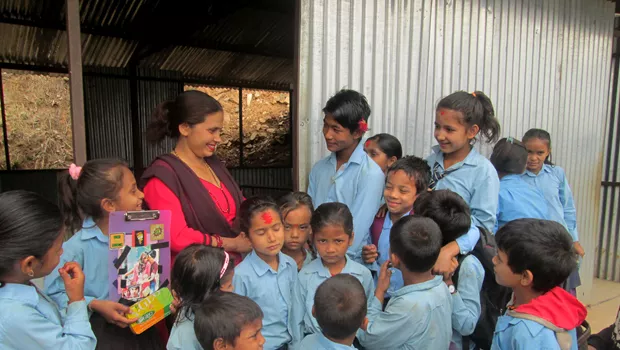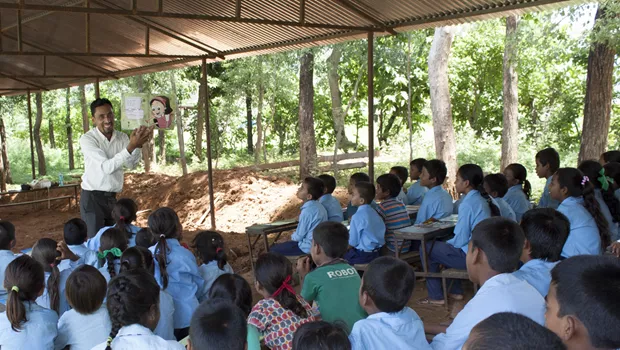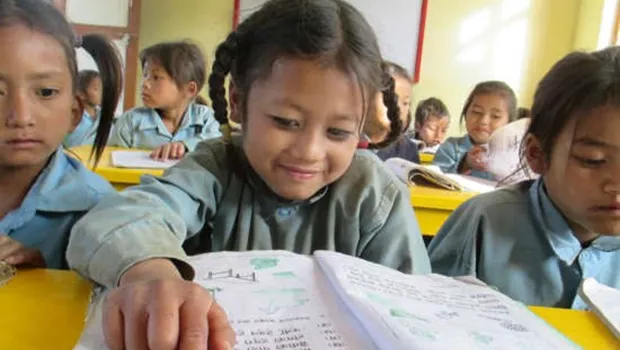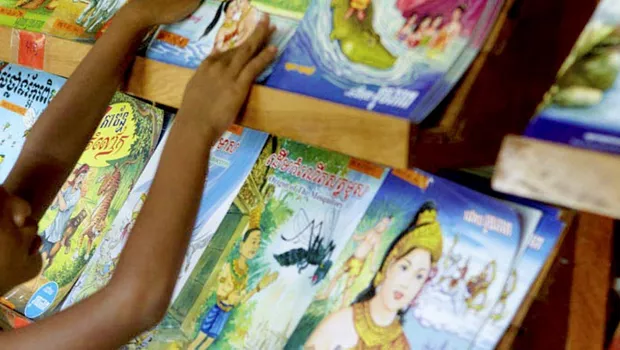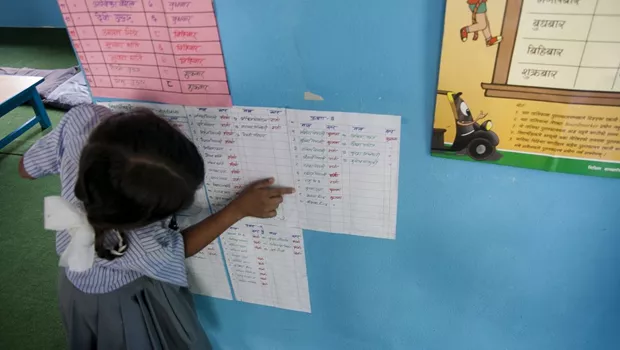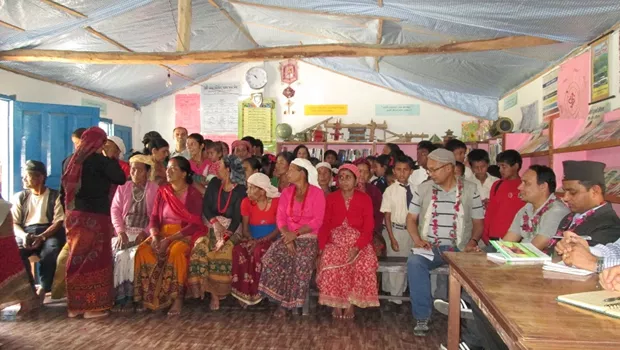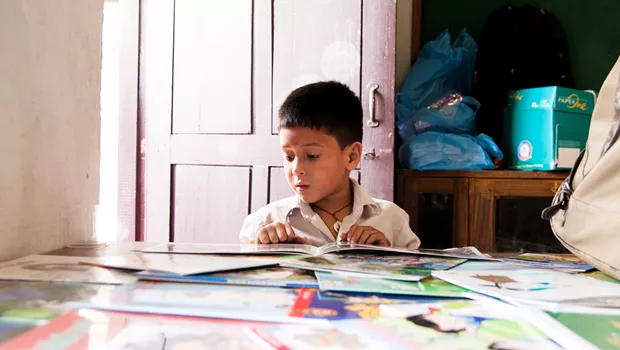It’s a quarter to eleven and a class of second graders is waiting in the library at their school in the Palpa District of Nepal, anxious for library period to begin. Soon their teacher Surya Prasad Shrestha arrives. He holds up a colorful, oversized book used for shared reading, one of several activities that make up Room to Read’s library period.
“Raise your hand when you hear one of the new words!” he says before launching into the story. A hushed silence descends on the room as Surya’s voice jumps into different characters. Hands shoot into the air as students recognize a new word. Suddenly Surya invites them to read aloud with him and the library is filled with children’s voice rising in unison.
“I’m very excited to see my students interested in the library,” said Surya. “They’re always early and they want to spend all their free time there.” Even during regular classes Surya finds his students trying to sneak library books inside their textbooks. “Before we had to struggle to get them to read,” he recalls. “Ever since the library came things have definitely changed for the better.”
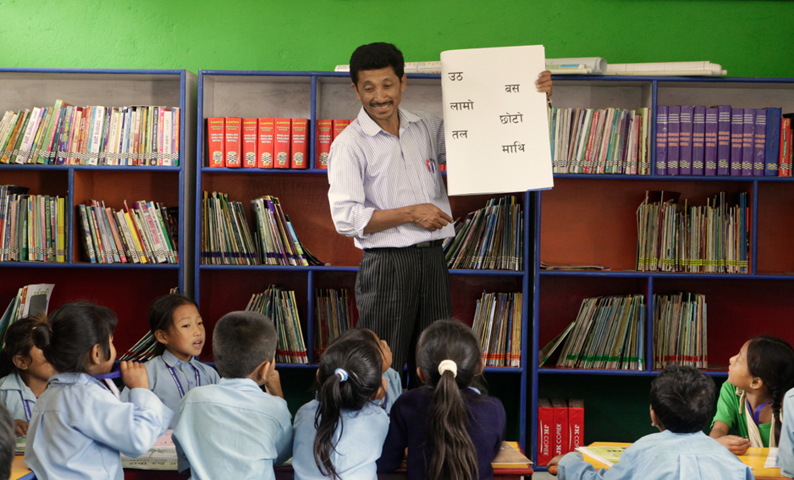 Nepali second grade teacher Surya Shrestha makes a game of teaching his students new words as part of Room to Read’s Literacy Program.
Nepali second grade teacher Surya Shrestha makes a game of teaching his students new words as part of Room to Read’s Literacy Program.
A virtuous cycle of reading
Library period is a regularly scheduled time for students that Room to Read requires of schools participating in its Literacy Program. Taking place in the library Room to Read has established at the school, teachers conduct fun reading activities with their students, such as reading in pairs, independently and with their teacher, that encourage them to develop the habit of reading.
A recent study we conducted in 106 schools we partner with across Nepal, Cambodia and South Africa showed that children are more likely to read when they frequent library periods and when they have a teacher or librarian trained by Room to Read who conducts reading activities in the library.
Our hope is that the more students develop the skills to read and the more fun reading activities they’re exposed to, the more they want to read, leading to ever-increasing literacy skills and a habit of reading.
What a difference training makes
“We didn’t have a library at my primary school and books other than textbooks were unheard of,” said Surya, thinking back to his childhood. Realizing the importance of having access to storybooks from a young age he advocated for a library for his students. Surya’s dream came true in 2014 when Room to Read ‘s Literacy Program arrived at his school.
“When the library opened it was one of the happiest days of my life,” he said. “I’m so glad my students don’t have to miss this opportunity like I did.”
Surya participated in every library training workshop Room to Read had to offer, led by our Library Management Facilitator Ashish Neupane. To make sure Surya was properly implementing the workshop learnings, Ashish visited the school to observe his library periods.
“At first it was difficult to turn the learnings into action in the library, but as I started noticing changes in my students it motivated me.” Surya said. “The change was more than we expected.”
For one, students who were usually absent started coming to school regularly — and participating. “They are more disciplined and they help their teachers manage the books in the library, “said Surya. “Even their parents are happy as they do not have to force their children to go to school.”
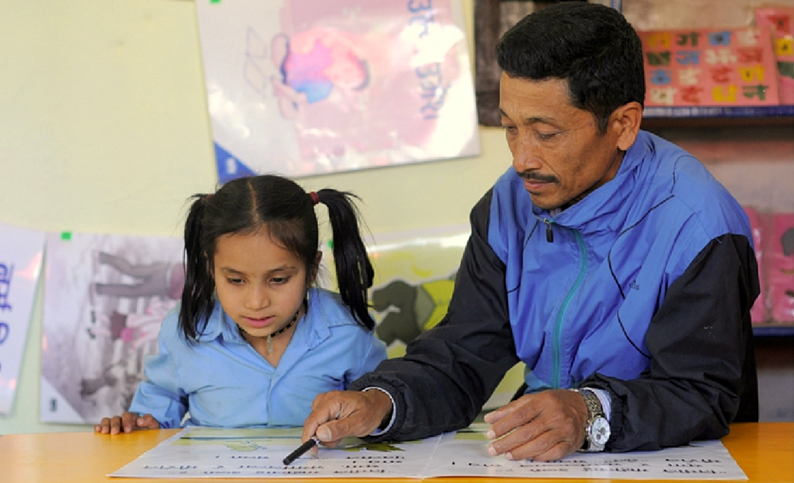 Primary school teacher Surya Shrestha reads with Bimala as part of Room to Read’s Literacy Program in Nepal.
Primary school teacher Surya Shrestha reads with Bimala as part of Room to Read’s Literacy Program in Nepal.
Bimala’s favorite story
Since the program started, Surya has become more confident in how he conducts library activities, leading his students through fun games to spark their interest and using different voices to bring a story’s characters to life. Instead of reluctant students who would rather be outside playing, “the students listen carefully and want to participate when Surya reads to them,” Ashish commented.
“It’s very common to find that the students don’t like textbooks,” added Ashish. “One reason is that they find them very difficult to understand. The way a teacher engages students in the library makes a big difference. I’ve seen many students who avoided books suddenly enjoy reading after we’ve taken their teachers through library training. Students become curious about books because their teachers know how to spark that curiosity. Then the children are motivated to read on their own.”
Eight-year-old Bimala, a student of Surya’s, puts on a funny face as she holds her favorite book Mero Bida ko Din (My Holiday). “I love attending Mr. Surya class because it’s fun!” exclaimed the second grader. “I enjoy coming to school because I don’t have library at home. I love the colorful books in the library.”
Surya smiles when he thinks about the transformation he’s seen in his students. “This,” he remarked, “will be seen as a milestone in their lives.”
Find out more about Room to Read’s Literacy Program.
Learn about the impact we’re making in Nepal.


